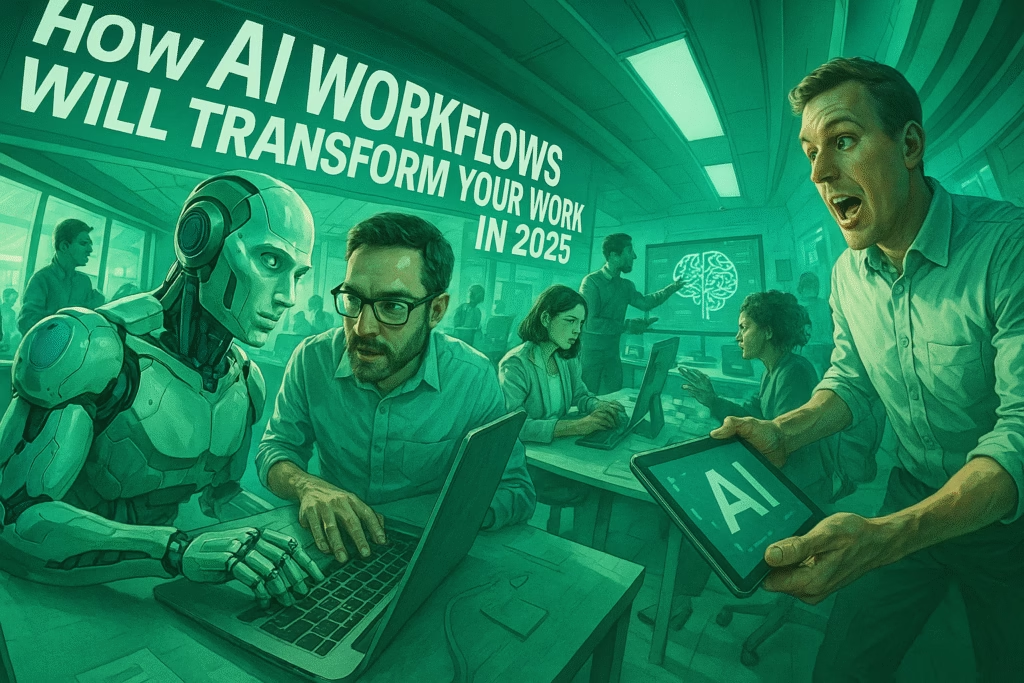The Rise of AI Workflows: A Game Changer for 2025
AI workflows are poised to revolutionize the way we work by 2025, fundamentally altering not only individual tasks but entire industries. As organizations globally look towards automation to enhance efficiency and productivity, the integration of artificial intelligence into everyday workflows is not just a possibility—it’s an inevitable reality. Imagine a world where repetitive tasks are handled seamlessly by AI, allowing human workers to focus on creativity and strategy. This transformation is not just speculative; it’s on the horizon, and understanding the implications now can give you an edge in preparing for the future.
Understanding AI Workflows
AI workflows consist of a structured process that incorporates artificial intelligence to automate and optimize various tasks within different sectors. These workflows leverage AI to enhance decision-making, improve efficiency, and reduce the cognitive load on employees.
Components of AI Workflows
– Data Collection: The first step in any AI workflow is the collection of data, which serves as the foundation for analysis and decision-making.
– Process Automation: Once data is collected, AI systems can automate processes—from data entry to complex decision-making tasks.
– Feedback Loops: AI workflows are designed with feedback mechanisms that allow systems to learn and improve over time, ensuring they stay relevant and efficient.
Types of AI Workflows
– Task Automation: Automating repetitive tasks like scheduling meetings, managing emails, and running reports.
– Predictive Analysis: AI workflows can analyze past data to predict future trends, helping businesses make informed decisions.
– Natural Language Processing: AI can help businesses interact with customers through chatbots and voice recognition systems.
The Impact on Productivity
One of the most significant advantages of implementing AI workflows is their profound impact on productivity. By streamlining operations and reducing the time spent on mundane tasks, AI allows employees to focus on higher-value activities.
Efficiency Gains Through Automation
– Time Savings: For example, an AI-driven scheduling tool can handle and organize meetings based on preferences and availability, saving countless hours.
– Error Reduction: Automated processes minimize human errors, enhancing the overall quality of output.
Empowering Employees
– Focus on Creativity: With AI handling repetitive tasks, employees can dedicate their time and effort to creative problem-solving and innovation.
– Skill Development: As AI takes over basic tasks, employees can upskill to take on more complex roles, resulting in better job satisfaction and career advancement.
AI Workflows in Different Industries
The transformation brought about by AI workflows is not limited to one sector; it permeates various industries, enhancing efficiency and improving service delivery.
Healthcare Sector
– Patient Management: AI can streamline patient intake processes, reminders for appointments, and even assist in preliminary diagnosis through data analysis.
– Research and Development: AI workflows facilitate drug discovery by analyzing vast datasets to identify potential therapeutic targets.
Finance Sector
– Fraud Detection: AI workflows can analyze transaction patterns in real-time to detect and respond to fraudulent activity promptly.
– Personalized Banking: Automation enables personalized recommendations for customers based on their transaction history and preferences.
Challenges in Transitioning to AI Workflows
While the benefits of AI workflows are immense, organizations must address key challenges during the transition phase.
Initial Costs and Investment
– Infrastructure Costs: Investing in the necessary technology and training staff can be significant.
– Long-term ROI: It may take time to realize the full return on investment, which could daunt some organizations.
Change Management
– Employee Resistance: Fear of job loss may lead to resistance from employees. Transparent communication and involvement in the process are crucial.
– Training Necessity: Staff may require training to adapt to new technologies, which can be time-consuming and may initially impact productivity.
The Future of AI Workflows
Looking towards 2025, the landscape of AI workflows will continue to evolve, driven by advancements in technology and changing workforce dynamics.
Increased Integration with Business Tools
– As AI becomes more prevalent, expect to see better integration with existing business tools like CRM systems, project management software, and communication platforms.
– AI’s ability to analyze large volumes of data will lead to enhanced data-driven decision-making.
Ethical Considerations
– With increased usage of AI comes the responsibility to ensure ethical practices. Organizations will need to address data privacy, accountability, and bias in AI decision-making.
– Establishing guidelines and frameworks will become critical to ensure that AI workflows align with organizational values and social responsibility.
Get Prepared for AI Workflows
To stay ahead of the curve, organizations should begin preparing for the transition towards AI workflows now. Here are some actionable steps:
1. Evaluate Current Processes: Identify areas in your workflows that could benefit from automation and AI.
2. Invest in Technology: Research and invest in AI tools that align with your organizational goals.
3. Engage Employees: Communicate openly with your team about the changes and involve them in the transition process to reduce resistance.
4. Focus on Training: Provide opportunities for employees to learn new skills that will be relevant in an AI-driven work environment.
As we progress towards 2025, AI workflows are not just a trend—they are the future of work. By embracing these changes early, organizations can unlock unparalleled opportunities for efficiency and growth.
Equipping yourself and your organization now with the knowledge and tools to navigate this transformation is essential. To take the next step into the AI-driven future, reach out for personalized assistance and guidance at khmuhtadin.com.


